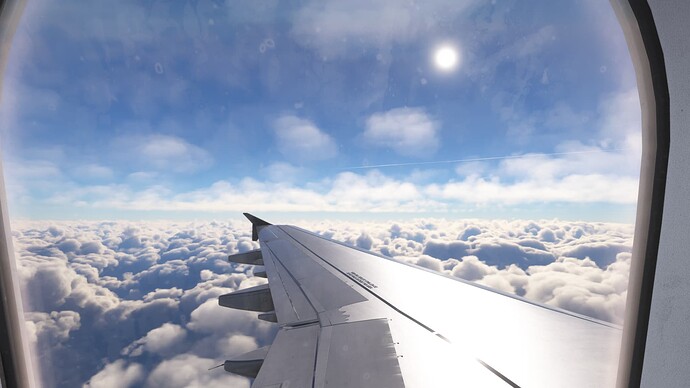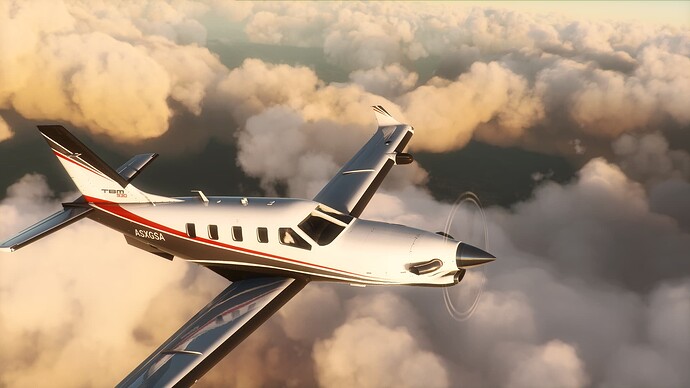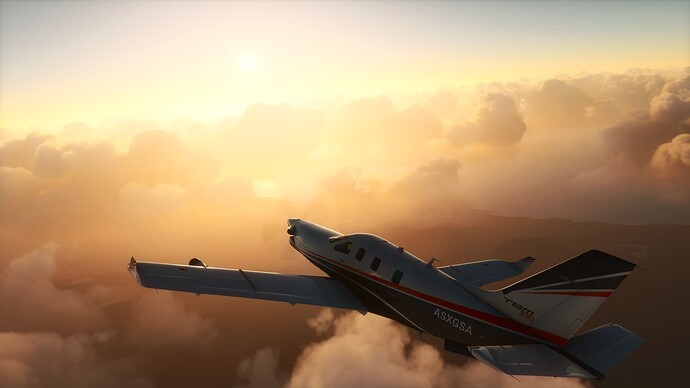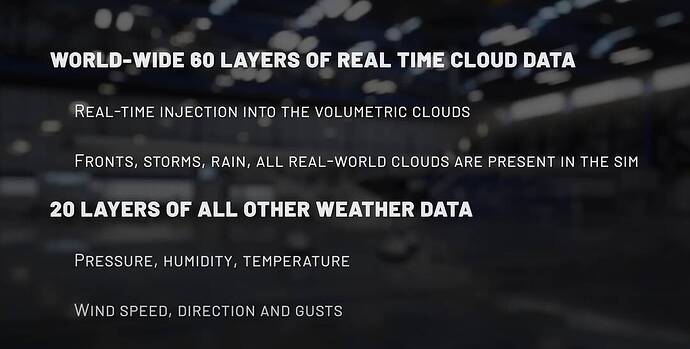Asobo, please pay attention:
Clouds aren’t just for show. The Sky makes for at least 50% of the entire flight simulator experience. In this regard, MSFS is seriously lacking.
The importance of this cannot be understated, it should be a top priority and we players, have reasons to fear it is being largely dismissed at this time.
Let me state this in clear terms, to be sure:
If no major improvements to weather are to be reasonably expected for FS2024, I and I’m sure many others also, will be giving it a solid miss
(coarsely meaning: “not better clouds = not buying it”, if language barriers exist)
..
..
- Common Use Case (and disappointment) study:
Just this week I had a lovely flight IRL, through some gorgeous weather that shook the plane in pleasant ways (for me at least, other pax not as much) and even saw a beautiful ring of white frost form on the forward lip of the engine cowling. Took off in clear skies, though with moderate visibility. Then flew through whispy cirrus into a layered broken sky, that prompted a turbulence heads-up from the captain during descent and an early (though not entirely necessary, in retrospect) seat belt sign.
It must be pointed out, that this experience cannot in any way, be even loosely approximated, let alone “captured” by reproduction in MSFS. Not with it’s current weather system.
Lacking points include:
-
Historic weather cannot be reproduced in the sim at all, real flight re-creation is not even attemptable, weather-wise.
Even if it were, however:
-
Visibility outside “METAR bubbles” is always unlimited, so even the CAVOK departure wouldn’t be as experienced IRL. (a flagrant 10nm circle of fog centered on the airport appears instead.)
-
Cirrus clouds don’t exist in MSFS, so no hopes there for the first half of that flight living up to (even reasonably tempered) expectations.
-
The exclusively low-fi volumetric rendering used by MSFS cannot portray the soft transition from the whispy cruise, to the layered puffiness encountered during descent.
- Low density clouds would have been done much better with a hybrid particles+volumetric system, instead of the (very GPU heavy) one-size-fits-none approach used.
-
The natural structure of mixed cloud layers is very poorly depicted, by only what looks like randomly sprayed transparent “flakes” all over the place, rather than puffy or whispy clouds.
-
There is no sense of going through a cloud when one does so in the sim.
- This could have been achieved by combining particle effects around the aircraft with the volumetric graphics, giving a sense of speed when inside clouds.
Alas, this it does not. Nor is it possible for something like it being done by addons.
-
Cloud turbulence does not happen in the sim, so total failure to match reality there.
-
Cloud icing also does not happen in the sim, so again, no chance of that frosted intake lip showing up either.
I shouldn’t have to say, that reliving flights as the captain in the sim, when a passenger in real life, is for many, a main attraction of Flight Simulators in general.
In that regard, MSFS fails egregiously at satisfying no less than 50% of the expected experience.
I mean: The ground looks great, but everywhere above, it totally drops the ball.
Thus, MSFS comes across as lacking altogether by half.
Namely, the upper half, aka: “the sky”.
–
Note also, (again) that Asobo does not need to have this be their problem if they choose so.
Full SDK access to weather would allow others to do it, (while thanking Asobo for letting them) with high levels of dedication as are only viable for 3rd party devs.
Judging by the results from FS2020, I strongly suggest that if the MeteoBlue deal denies us this much needed access, then it is NOT worth keeping.
Honestly, if this is the best that can be done with the data they provide, we’d be much better off with the SDK instead.









